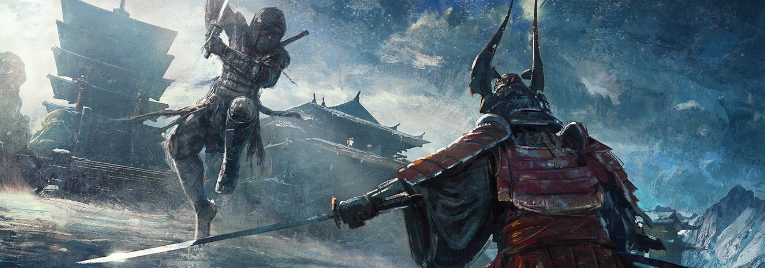Kodrans
Originating from the natives of Tongiu, the Kodrans are known for their warrior's ferocity and prowess throughout centuries of war. Kodrans tend to excel in multiple combat techniques, arts, diplomacy, and espionage.
Home Region: Island of Tongiu
Origin: Distinct tribes and clans dating back to 500 BR
Presence: Steadfast, renewed
Common Religions: Makan Pantheon Real World Influence: Ainu, Japanese 5e Additions:
Magic Proficiency: Fire Evocation
Non-Magic Proficiency: Stealth
2. One Step
3. Sejinojo
4. Death
5. A River
Origin: Distinct tribes and clans dating back to 500 BR
Presence: Steadfast, renewed
Common Religions: Makan Pantheon Real World Influence: Ainu, Japanese 5e Additions:
Magic Proficiency: Fire Evocation
Non-Magic Proficiency: Stealth
History
The Kodrans are a collection of clans from Western Tongiu. Their nation emerged through opposition to the Salkans who settled southern Tongiu and became the Steerians. Through several wars of conquest, the Steerians had proven themselves to all but the Kodrans, who were the only nation to best the Steerians in battle. Centuries later, the Kodrans were also the only nation to oppose the growing power of the Seika in eastern Tongiu. Seikans and Kodrans went to war several times before agreeing to peace, which lasted for several more centuries.A Unified Kodra
The Kodran people were once loosely unified under a confederacy founded by the compassionate and charismatic Xia Imeshi, who was mutually accepted as Queen of the Kodran tribes and kingdoms in 96 AR Around 100 AR, the Seikan King Mue Ne of Xixin invited Kodran Royalty to a chateau in Linsubin. There, the new king tried to show off his dominance. When his guests did not take much heed to his "lessons" he had them murdered in a fit of rage. Among those guests was the beloved Kodran Queen Xia Imeshi, which understandably upset the new Kodran confederacy. The act sparked a war that lasted nearly 20 years, with Kodrans and Makans, joined by some Steerians who were just happy to fight, dismantling the Seikan Kingdom and partitioning it. While the Kodrans did notably more work in wearing down Seika's armies, it was the Makans who seized most of the glory in conquest. This new territorial balance between the powers heightened tensions across Tongiu. It came to a head in the 140s AR when the Mako fought a series of wars with the Kodrans. The result of the conflicts were repeated stalemates despite immense bloodshed. The nations of Mako, Kodra, and Steeria eventually agreed to a mutual peace treaty named the Tri-Pact treaty which would hold for more than 3 centuries. In the 300s AR, the city-state Kikasa began diplomatic and military operations which resulted in formally unifying the cities and tribes which once followed the Kodran confederacy. Kikasa effectively created the Kingdom of Unified Kodra by 375 AR, led by the diplomatic Daimyo Kawada Haida.The Fall and Resurgence
In 452 AR there was a coup in the Kodran government and the Ietame dynasty rose to power. The Ietame shared the sentiment with many common Kodrans that the Mako had grown too big and too powerful and needed to be taken down again. They thus began to plan their eventual war, believing their military power was still equally matched with the Mako. While heavily outnumbered, the Kodrans went to war in 475 AR under Azai Ietame. They scored a miraculous victory at the Battle of Chozhou plains and practically crippled the Makan military presence on Tongiu. Dealing with several rebellions, the Makans were forced to bide their time until they eventually pulled several more experienced armies from Severon. In a succession of lightning quick sieges, the Kodrans were quelled and brought under Makan dominion. The Kodrans were then under the Makan Empire until 805 AR when Mao Guo Aly-a-Song ascended the throne and threw the government into chaos. Kodra was among the first to break away from Mako, with several cities claiming to be the true center of a new Kodran Kingdom. Ultimately, this resulted in multiple Kodran Kingdoms sending military "aid" into Mako to spread the chaos.Traditions
Kodrans, as warriors, appreciate the art of war and so it is replicated throughout their culture. Paintings, tapestries, manuscripts, all reference combat in some way or another - even if it is not the most obvious. Exercising, dances, and games also revolve around martial techniques and practices. In fact, the wargames created by the Ismians became popular in Kodra after they were introduced in the 600s AR by Knori merchants. The Kodrans are also credited with the perfection of meditation as well as mental therapy. To a Kodran, one must be strong in mind just as much as they are strong in body.Mythos
The Kodrans, while remaining a largely human-dominated culture, adopted several elven techniques on war and art from the Sinans and Slintans. Kodra is also home to a number of spy and assassin guilds, and has dispersed a record number of "diplomats" abroad. The global underworld is aware of Kodra's prowess in such activities, and Kodran guild services are often in demand. However, the Makans were effective in suppressing these guilds well, until they resurged under the rebellions in 805 AR. What essentially happened for the criminal underworld of Tongiu, and West Kronis in general, was a power vacuum both politically and locally. Many guilds arose and fell at this time.Naming Traditions
Kodrans take surnames based from their clans, but are sometimes replaced by descriptions of their physical deeds and prowess. Common examples:
Male: Rensuke Kaizan, Harunobu Izanagi, Azai Ietame, Tenshiro Storm-Caller, Jirou Ashen-Claw
Female: Yuzuki Moonblade, Naoko Silent-Warden, Sarina Hoshigane, Sayom Takemaru, Meiya Fire-Touched
2. One Step
3. Sejinojo
4. Death
5. A River
Artwork by Saby Menyhei



Comments